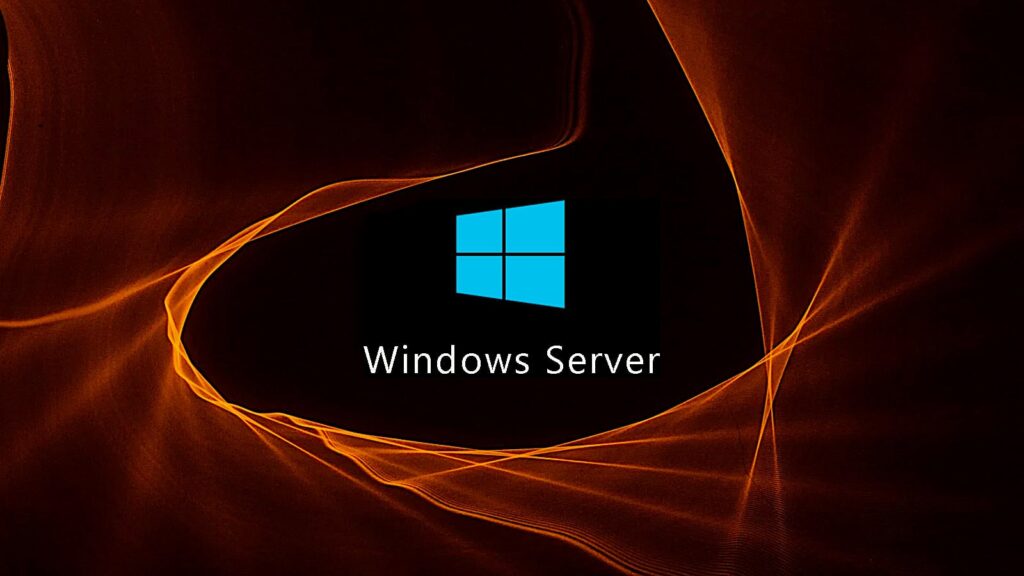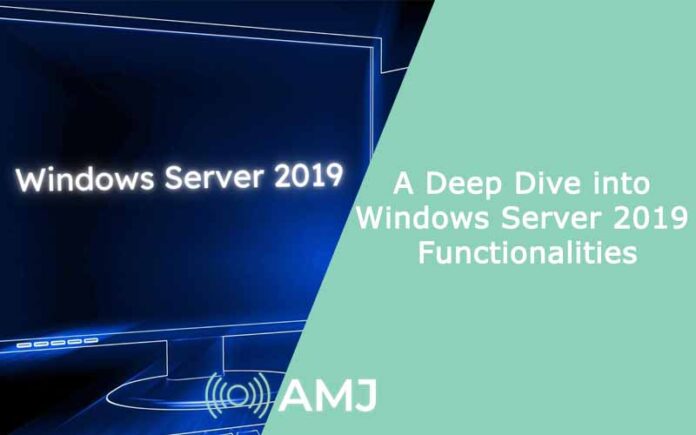Windows Server 2019 represents a significant release of Microsoft’s server operating system, introducing numerous enhancements and innovations across four key domains: hybrid cloud, security, application platform, and hyper-converged infrastructure.
In this article, we will explore the capabilities of the software and how they can be utilized to optimize enterprise IT infrastructure. For detailed instructions on downloading and setting up, please refer to the Windows Server 2019 download page.

Contents
Integration with Hybrid Cloud
A central focus of Windows Server 2019 is its integration with the hybrid cloud environment. This version supports various hybrid scenarios, including:
- Azure File Sync, facilitating file synchronization between on-premises servers and the Azure cloud.
- Azure Backup, enabling the backup of virtual machines and data to the cloud.
- Azure Site Recovery, facilitating disaster recovery and workload migration.
- Azure Network Adapter, allowing direct connection to Azure virtual networks.
All these services can be centrally configured and managed through the Azure portal, ensuring seamless integration of on-premises infrastructure with cloud resources. Integration with Azure Cloud also aids in optimizing storage, networking, and security infrastructure by leveraging the scalability and flexibility of the cloud platform.
Hyper-Converged Infrastructure (HCI)
An important advancement in Windows Server 2019 is the expanded support for hyper-converged infrastructure (HCI). HCI consolidates compute, networking, and storage resources into a unified cluster of servers, offering benefits such as:
- Simplified server deployment and management.
- Reduced hardware costs.
- Improved system performance and reliability.
Windows Server 2019 introduces several features and tools for HCI, including:
- Storage Spaces Direct for creating software-defined storage systems.
- Storage Replica for synchronous and asynchronous replication between servers.
- Storage Migration Service for server and data migration to newer versions of Windows Server.
- System Insights for predictive analytics and optimization recommendations.
With these tools, administrators can easily create, configure, monitor, and migrate HCI clusters, while gaining valuable insights into current workloads and system performance.
Security Enhancements
Windows Server 2019 implements a range of security enhancements to bolster server protection against various threats and vulnerabilities, including:
- Encryption and isolation of virtual machines using Shielded Virtual Machines.
- Detection and response to sophisticated attacks through behavioral analysis in Windows Defender ATP.
- Improved security and performance of Windows Server containers through smaller footprints, faster startup, and group-managed service accounts.
These features significantly enhance server infrastructure protection and help mitigate risks associated with external and internal security threats.
Application Platform Improvements
Windows Server 2019 offers a range of platform improvements aimed at simplifying the development and deployment of modern applications, including:
- Built-in support for container orchestration with Kubernetes.
- Ability to run Linux applications using Windows Subsystem for Linux (WSL).
- Support for .NET Core 3.0 for building classic Windows applications on a modern cross-platform platform.
These innovations position Windows Server 2019 as a powerful and versatile platform suitable for a wide range of applications and usage scenarios.
Administration Tools
Windows Server 2019 introduces several enhanced tools for server administration and management, including:
- Windows Admin Center: A unified web console with a modern interface for managing servers, clusters, HCI, and Windows 10 clients.
- PowerShell Core 6: A cross-platform version of PowerShell that operates on Windows, Linux, and macOS.
- System Insights: A built-in service that employs machine learning and predictive analytics to provide optimization recommendations and issue resolution.
These administration tools are designed to simplify common tasks related to server configuration and maintenance, as well as automate many routine processes.
Other Key Enhancements
In addition to the aforementioned areas, Windows Server 2019 includes many other notable improvements, such as:
- Enhanced performance and security of software-defined networks (SDN) through high-performance gateways and subnet encryption.
- Expansion of clustering and fault tolerance capabilities, including Cluster Sets, Azure-aware clusters, and USB witness.
- Improvements to remote desktop services in terms of performance, scalability, and integration with Azure Active Directory.
These enhancements collectively make Windows Server 2019 one of the most versatile and innovative releases to date.
Use Cases
Let’s examine several specific examples of leveraging Windows Server 2019 capabilities across various industries and organizational types:
- A retail company with a distributed branch network can utilize Azure File Sync with Storage Spaces Direct to centralize and optimize its data storage system, reducing costs and streamlining administration.
- A financial institution handling sensitive client data can deploy Shielded VM and Windows Defender ATP to fortify the protection of its infrastructure, safeguarding critical data from compromise.
- A manufacturing enterprise with legacy business applications can adopt Kubernetes and Windows Server containers to modernize its applications without a complete architectural overhaul, thereby enhancing flexibility and adaptability to changing business needs.
These examples highlight how organizations can effectively harness the capabilities of Windows Server 2019 to address specific challenges associated with digital transformation.
Conclusion
In conclusion, Windows Server 2019 offers an impressive array of enhancements across virtually all key areas — from integration with Azure cloud and support for hyper-converged infrastructure to the platform for modern applications, administration tools, and security features.
https://community.hpe.com/t5/image/serverpage/image-id/112430iDFF0D4BEB26C34DC?v%5C=v2
By leveraging the services and technologies of Windows Server 2019, enterprises will be able to:
- Modernize and optimize their IT infrastructure.
- Increase business flexibility and adaptability.
- Accelerate digital transformation and innovation adoption.
- More effectively ensure security and compliance with regulatory requirements.
If you haven’t yet explored the capabilities of Windows Server 2019, try out this operating system and assess how it can help unleash the potential of your server infrastructure.












![Index of Money Heist [Season 1, 2, 3 & 4 – All Episodes, Cast and Plot] Index of Money Heist](https://www.asiamediajournal.com/wp-content/uploads/2021/05/Index-of-Money-Heist-3-100x70.jpg)